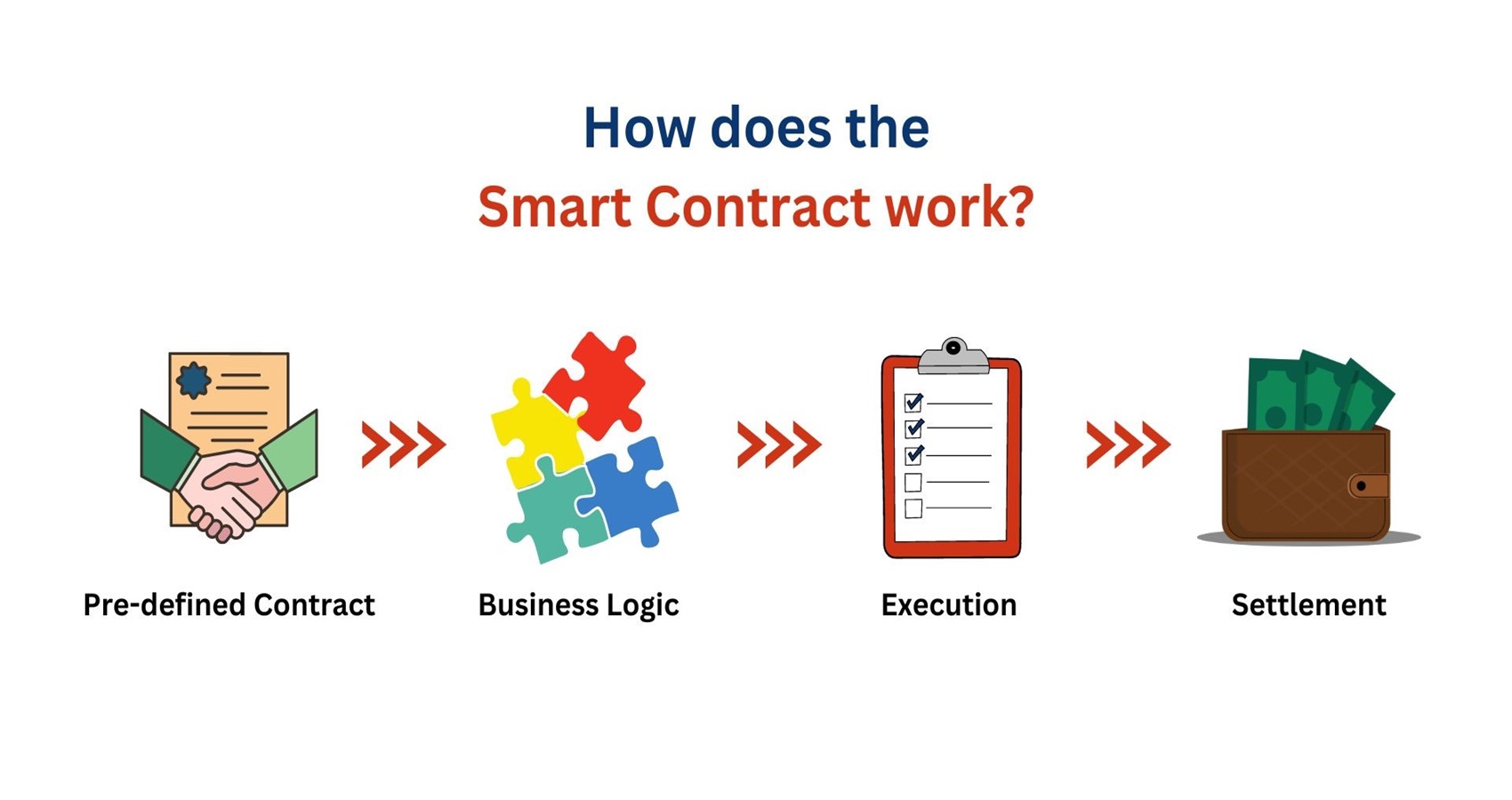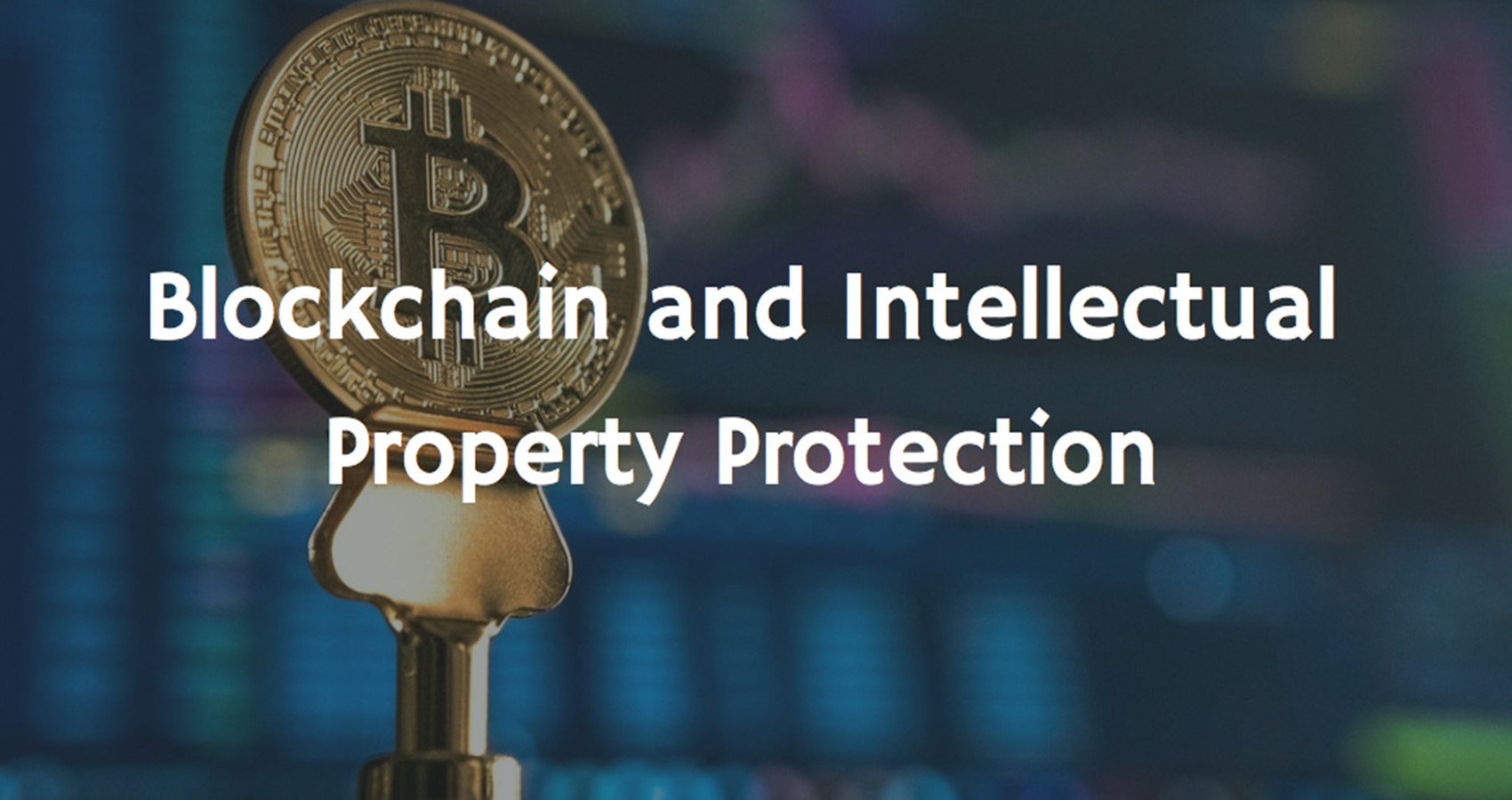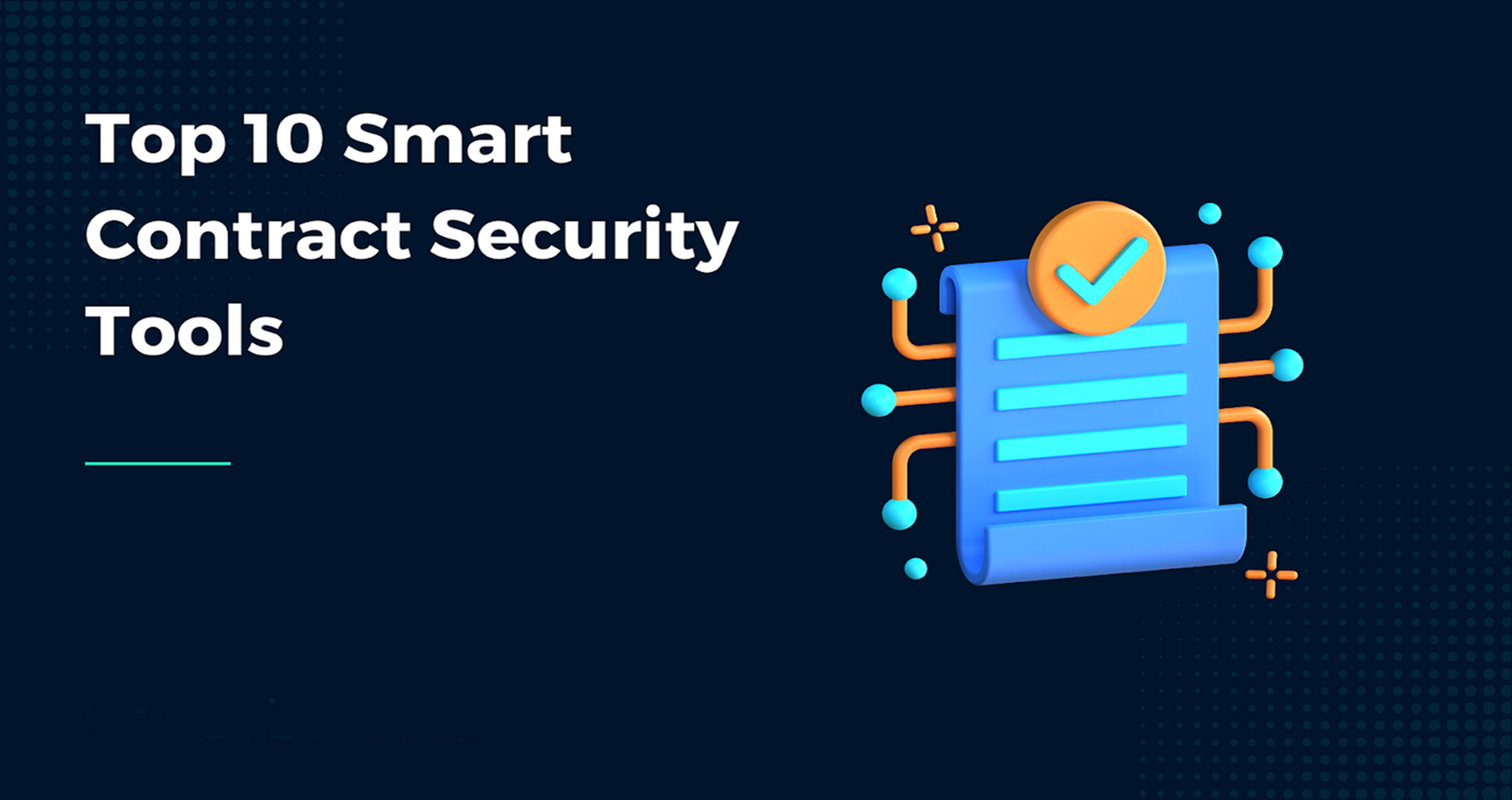A fascinating trend emerging online is the creation of AI influencer girls – digitally generated models and personalities powered by artificial intelligence. From Lil Miquela to Imma, these virtual humans demonstrate the potential for AI to reimagine social media stardom and influence. In this comprehensive guide, we explore: Let’s dive in to understand this emerging trend at the intersection of technology, influencer marketing and pop culture. The Rise of Fictional CGI Influencers In recent years, there has been growing popularity of fictional CGI models created through computer graphics and backed by fictional biographies. Some prominent examples include: Lil Miquela One of the earliest and most popular AI influencer girls with over 3 million Instagram followers. She is portrayed as a 19-year old Brazilian-American model and musician. Noonoouri A CGI fashion model represented by top agencies with real brand deals for Dior and Kim Kardashian’s brand Skims. She is depicted as Iranian-French. Imma Created by modelling agency The Diigitals, Imma is a Japanese AI influencer known for her interactive TikTok videos and speaking at tech conferences. Bermuda A digitally created artist and music producer presented as non-binary who advocates for LGBTQ+ rights and diversity in AI. Rozy An AI influencer girl developed by Russian company Neon who discusses philosophy and arts alongside posting lifestyle content. Brands can license her image. These fictional computer-generated personalities blend AI, 3D art, AR filters, and branding to cultivate social media followings just like human influencers. How AI Influencer Girls Are Made A diverse mix of technologies come together to create convincing virtual AI influencer girls: 3D Modeling Photorealistic 3D human models are constructed in software like Daz 3D, Blender, Maya, etc. to create the virtual avatar and outfits. Motion Capture Studio motion capture sessions capture movements and facial expressions from real models to animate the CGI influencers in a natural human way. Generative Neural Networks AI like GAN networks can generate faces, expressions, and photo-real imagery of the avatars. AR Filters and Effects AR development kits like Snap’s Lens Studio and Instagram’s Spark AR enable AR masks, filters and effects featuring the influencers. Voice Synthesis Using deepfakes AI techniques, natural sounding voices can be generated for the characters to create speech in videos. Social AI To automate social interactions, conversational AI is trained on past context to maintain their personality automatically through large language models. These technologies enable influencers that feel startlingly human but are fully controlled through AI systems behind the scenes. Brand Partnerships and Sponsorships One appeal of CGI influencers is the ability for brands to directly dictate sponsored content and leverage their image through licenses without reliance on human models. Some examples: As brand safety and relatability becomes harder for human influencers, AI avatars provide direct control and synthetic personality brands can tailor. Reception and Controversy However, fictional AI influencers have also garnered criticism over authenticity and setting unrealistic beauty standards: The future role and responsibilities of AI influencers remain debated as the technology matures. Authenticity and transparency will be critical. The Future of Virtual Influencers Multiple trends point to expanded use of virtual avatars and digital humans: We are only scratching the surface of synthesizing identity, community, commerce and technology. The influencer arena may be forever changed. Conclusion While still an emerging trend, CGI virtual influencers provide a window into how AI, AR, and generative methods can synthesize believable personalities tailor-made for digital mediums. The coming years will reveal whether these AI avatars are embraced as the next evolution of influencer culture or face backlash over authenticity concerns. True mainstream success will likely depend on maintaining transparency over their manufactured origins to build audience trust. But if the technology advances to safely imbue these creations with creative expression and autonomy, they could transcend novelty acts and form the foundation for reinventing entertainment itself. We are not far from a world where everyone can curate their own AI companion, collaborator and influencer imbued with elements of the human condition that make interaction meaningful.
How Blockchain Technology Solutions Are Transforming Business
Blockchain has transitioned from a niche experimental technology to one of the most promising and disruptive innovations of the 21st century. Companies across industries are exploring ways to leverage blockchain’s innate security, transparency, and automation to solve real business challenges. In this comprehensive guide, we will explore: Let’s dive in to understand how blockchain technology solutions are delivering tremendous value and set to revolutionize many foundational systems underpinning commerce and society! Why Companies are Adopting Blockchain Technology Here are some of the key drivers spurring blockchain adoption across sectors: Enhanced Security – Blockchain’s decentralized nature provides greater protection against theft, hacking, and manipulation of sensitive data. Operational Efficiencies – Automating manual processes via smart contracts reduces costs and minimizes human error. Faster Settlements – Asset transfers like payments on blockchain networks complete in seconds or minutes versus days. New Business Models – Tokenization allows creating new ways to fractionalize ownership and incentives like loyalty points. Supply Chain Transparency – Tracking components and provenance from source through blockchain improves integrity monitoring. Regulatory Compliance – Immutable records allow demonstrating compliance with legal and regulatory requirements. Improved Trust – Transparency features rebuild consumer and partner trust in data accuracy and business practices. These benefits are driving major investments into integrating blockchain into foundational systems. Types of Blockchain Business Solutions There are diverse blockchain applications transforming all major industries: Payments Processing – Accelerating domestic and cross-border business payments between partners, vendors and customers. Identity Management – Digital IDs allow secure identity verification and reduce customer onboarding friction. Loyalty and Rewards – Tokenizing points onto blockchain provides transparency and flexibility in rewards models. Provenance Tracking – Pinpointing the full origin and lifecycle history of products through supply chain tracking. Credential Management – Issuing professional credentials like certifications and licenses in a tamper-proof digital format. Record Keeping – Maintaining critical records like medical history, land deeds, and other documents in a tamper-proof shared ledger. Intellectual Property Protection – Blockchain provides irrefutable evidence and records to establish ownership over IP and creative work. Automated Agreements – Smart contracts enable automating complex contractual workflows between business partners. These blockchain applications optimize workflows, reduce costs, encourage engaged ecosystems and restore confidence in commerce for businesses willing to adopt them. Real World Blockchain Solution Examples Many pioneering companies are already realizing value from blockchain-based solutions: These large institutions validate blockchain as a smart long-term investment. Building an Enterprise Blockchain Solution Developing an integrated blockchain platform involves these key steps: Identifying Business Requirements – Conduct internal analysis and stakeholder interviews to map required capabilities and constraints. Evaluating Blockchain Options – Assess whether public, private or hybrid blockchain models are best suited to requirements. Designing Architecture – Spec out the end-to-end architecture including APIs, databases, encryption, wallets, mining/staking, integrations etc. Selecting Platform – Choose existing blockchain platforms like Hyperledger or build custom chains optimized for the particular use case. Developing Applications – Program front end and backend applications like mobile apps, web dashboards, analytics, and interfaces. Configuring Security – Implement robust encryption, access controls, key management, cybersecurity monitoring, audits and disaster recovery. Launching Pilots – Start controlled pilot projects to test real world performance, identify issues, and refine workflows based on observations before scaling. Support & Upgrades – Provide ongoing upgrades, integrations, optimizations and support to ensure sustainable long term success. A deliberate process ensures blockchain solutions are tailored to meet stakeholder needs and deliver lasting business value. Leading Blockchain Consulting and Development Firms Many technology consulting firms now offer blockchain-focused services spanning strategy, design, and development: These established firms provide credibility and accelerated results but smaller blockchain specialists can offer greater customization and agility. The Future of Enterprise Blockchain Here are several predictions on how blockchain could reshape businesses and industries moving forward: Blockchain adoption is inevitable given the clear advantages and accelerating innovation in the space. Forward-thinking companies will use it to disrupt rather than be disrupted. Conclusion Blockchain moves beyond hype once understood as a paradigm shifting data architecture providing independent trust, integrity and transparency across transactions. Across supply chains, contracts, payments, credentials, ownership and virtually all business domains, blockchain returns control to collaborative ecosystems instead of rent-seeking intermediaries. While still maturing, patient and prudent blockchain integration will future-proof companies with agility, lowered costs, stronger relationships, and new opportunities to create value. Partnering with experienced firms allows organizations to extract benefits from blockchain in months rather than the years required going solo. We foresee a next generation internet of value emerging – one where our digitalidentities, reputations, livelihoods, and rights transcend borders, enterprises, and ideologies by being rooted in united and neutral networks upholding human virtues like truth, free exchange, and collective human progress.
What Are Smart Contracts in Blockchain? A Beginner’s Guide
Blockchain technology has disrupted many industries in the last decade, enabling new decentralized models powered by its innate security, transparency and automation capabilities. One of its most transformational applications is smart contracts – self-executing code on the blockchain enabling automation without intermediaries. Let’s get started and understand why smart contracts are positioned to revolutionize many industries in the coming years! What Are Smart Contracts? A Simple Explanation A smart contract is a self-executing agreement encoded into lines of code that is stored and replicated across a blockchain network. The terms of the contract between the transacting parties are written into code using programming languages like Solidity. When predetermined conditions are fulfilled, the smart contract executes automatically to deliver the business logic and outcomes programmed by its creators. For example, transferring funds from one party to another upon receiving a payment. Smart contracts allow transactions and agreements between parties to be carried out automatically in a transparent, conflict-free way without requiring a centralized authority. The code controls the execution, and transactions are trackable on the blockchain. Some key properties of smart contracts include: The potential for smart contracts to disrupt legal, financial, and many other sectors is derived from these qualities of automation, speed, cost reduction, and decentralization. A Brief History of Smart Contract Development While blockchain enabled the realization of smart contracts, the conceptual foundation was laid decades ago. Here is a quick overview of the evolution of smart contract technology: While still maturing, we are seeing rapid evolution and innovation across smart contract platforms, languages, tooling and applications. Smart contracts are poised for mainstream adoption as blockchain infrastructure improves. Why Are Smart Contracts Impactful? Key Benefits Explained Smart contracts unlock game-changing possibilities and benefits compared to traditional paper contracts or digital agreements: Trustless Execution Smart contracts remove intermediaries and the need to trust any centralized authority for oversight or processing. Agreements execute automatically based programmed code. Transparency All parties can review smart contract code, transactions are visible on the blockchain, and records are tamper-proof. This eliminates ambiguities. Accuracy Automated execution eliminates human error, miscommunication or potential fraud in manual contract management. Outcomes are precise. Savings Smart contracts minimize fees, overhead costs and delays by removing middlemen. The automation streamlines processes. Speed With no manual review required, smart contract transactions complete at much faster speeds measured in seconds or minutes. Stored on Blockchain Smart contracts have records permanently written to blockchain ledgers for independent verifiability and auditability. The combination of these factors allows smart contracts to enable breakthroughs in how business agreements operate across industries. How Smart Contracts Differ from Traditional Contracts While smart contracts share similarities with conventional legal contracts, there are some key differences: Automated Execution Traditional contracts rely on involved parties to interpret terms and manually fulfill obligations. Smart contracts self-execute based programmed code. Speed Changes to traditional contracts require review cycles and physical signatures. Smart contracts enable near real-time modifications. Enforcement Courts are required to settle disputes with traditional contracts. Smart contracts are enforced by immutable code and blockchain data. Storage Paper contracts must be physically stored and managed. Smart contracts exist digitally on blockchain. Data Privacy Standard contracts maintain confidentiality. Smart contracts transactions are publically visible on public blockchains. Programming Skills Legal writing abilities are required for typical contracts. Coding skills are needed to create smart contracts. While they have differences, smart contracts and standard contracts can complement each other. Hybrid models blending both methods are popular for complex agreements. Technical Components of a Smart Contract Under the hood, here are the key technical pieces that make up a smart contract: Contract Code The core program containing data variables, business logic, executable functions defining contract behavior. Written in a language like Solidity. Application Binary Interface (ABI) The ABI is the interface for interacting with the smart contract from external applications. It defines how to pass data into the contract. Bytecode Bytecode is what the compiled smart contract code gets converted into that is then executed by the blockchain virtual machine. Blockchain Network The distributed blockchain network provides the decentralized infrastructure for deploying, running, and recording smart contracts. State Storage Data variables that track the current state of the smart contract are stored persistently in blockchain network nodes. Events Events are signals emitted by the smart contract code to indicate something has happened, like a transfer being completed. DApps can listen for events. Functions Functions contain the logic of the smart contract. They execute based on user inputs and contract state to perform operations. The exact implementation details vary by blockchain, but these are the primary components developers work with when coding smart contracts. Popular Blockchain Platforms for Smart Contracts While most blockchains have some smart contract capabilities, here are some of the most popular and advanced platforms used for developing robust smart contract applications: Ethereum The second largest blockchain by market cap after Bitcoin, Ethereum was the first to allow Turing-complete smart contracts. It provides a powerful programming language in Solidity and an EVM for contract execution. Over 3000 DApps have been built on Ethereum smart contracts. Polygon Polygon is a Layer 2 scaling framework that works with Ethereum to provide faster and lower cost transactions for Ethereum-compatible smart contracts and DApps without compromising security. Solana Solana is a high speed open source blockchain supporting the Rust programming language for smart contract development. It uses a “proof of history” consensus and claims to offer 65,000 TPS throughput. Cardano Cardano is an open source proof-of-stake blockchain network designed for secure smart contracts. It uses the Plutus language purpose built for writing Cardano smart contracts. Algorand Algorand is a permissionless pure proof-of-stake blockchain and ecosystem for building decentralized applications and smart contracts. It uses TEAL, a low-level language for smart contracts. Cosmos Cosmos is focused on solving blockchain interoperability through its Cosmos SDK and Tendermint consensus. Its ecosystem supports multiple languages for smart contract Solidity – The flagship language for writing Ethereum smart contracts. Similar to JavaScript. Vyper – A Python-like language also for Ethereum smart
Is Blockchain Intellectual Property Protection the Answer to Creators’ Copyright Problems?
The internet has enabled creators to share their works and ideas with the world like never before. However, it has also facilitated widespread copyright infringement and piracy that deprives artists of income and attribution. Blockchain technology offers promising solutions to better protect intellectual property online and maintain creator rights through immutable distributed ledgers, metadata tagging, and smart contracts. In this 3,500 word guide, we will examine: Join us as we explore whether blockchain could be the needed answer to restore proper compensation and control to creators in this exponential information era. The Growing Threats to Intellectual Property Online The digital revolution has made creating and distributing creative works easier than ever, but has also enabled infringement on an enormous scale. Copyrighted material can be endlessly duplicated and shared without attribution or payment. Even as content has gone digital, intellectual property protection remains anchored in outdated legal and technical systems insufficient for the internet age. Some major threats include: Piracy – Illegal distribution of copyrighted material remains rampant across peer-to-peer networks, cyberlockers, stream ripping sites, and mobile apps. This deprives artists of revenues. Counterfeiting – The sale of knockoff consumer goods using trademarks causes massive losses for brands and risks for consumers unable to distinguish genuine products. Patent Infringement – Discovering and prosecuting infringement of patented inventions and technologies within complex supply chains is extremely challenging. Plagiarism – The copying of creative work without credit, enabled by easy access online and deficient detection tools, causes idea theft. Weak Attribution – Even when work is shared legally, metadata about authorship and ownership is often stripped as content spreads online. Slow Legal Recourse – Pursuing infringers through courts remains expensive, jurisdictionally messy, and lengthy compared to the speed of digital piracy. Limited Enforcement – Site blocking, strikes policies, takedowns provide incomplete solutions and whack-a-mole responses. Truly scalable protections remain elusive. According to IP Commission estimates, infringements and counterfeiting cost the U.S. economy alone over $600 billion annually and 5.5 million jobs. Clearly, better solutions are required, which emerging blockchain-based systems can potentially offer. How Blockchain Can Enhance Intellectual Property Protections Blockchain’s decentralized, immutable ledger architecture offers several key advantages for securing various forms of intellectual property: Copyrights Patents Trademarks While aspects like forcibly removing infringing content still require legal due process, blockchain systems inherently raise the accountability and transparency around intellectual property rights. This brings us closer to creator protections at web scale. Real World Blockchain IP Protection Projects Many promising projects exploring blockchain IP protections have already emerged: Binded – Startup using blockchain to timestamp copyrights and track infringing content through web crawlers, allowing creators to manage rights and pursue infringers. LBRY – Decentralized video sharing platform built on blockchain that preserves attribution back to creators and resists censorship through distributed infrastructure. APESTREET – Marketplace for buying NFTs linked to real world street art to fund artists and provide collectors provenance. Mediachain – Uses blockchain to properly source, identify, and track attribution for media assets as they spread across the web. Verisart – Provides certification and verification services for digital artwork and collectibles using blockchain certificates of authenticity. UnblockTV – Leverages blockchain and IPFS peer-to-peer storage to distribute video content with traceable rights management and prevent takedowns. Libra – Initiative by Creatd to formalize copyright registration on blockchain and assist with pursuing infringers. PatentBooks – Platform for securely recording ownership, licensing, and commercialization history of patents and inventions on blockchain. Chronobank – Uses blockchain-based smart contracts and labor tokens to reduce payroll fraud and ensure proper payment for creative work. As these early innovators validate concepts, traditional content and commerce platforms are also moving to adopt blockchain protections. Even governments are trialing blockchain IP registries recognizing the need for better tech solutions. Benefits Over Traditional Intellectual Property Defenses Compared to traditional IP rights approaches, blockchain solutions offer several advantages: Automation – Smart contracts allow licensing, royalties, and permissions management to occur automatically based on usage. Transparency – All participants in the ecosystem gain visibility into ownership, rights, and usage activity. Accuracy – Records on blockchain are highly resistant to manipulation or falsification that plague existing databases. Timeliness – Waiting periods for granting protections are reduced through instant registration and verification potential. Granularity – Usage and rights can be crafted at extremely nuanced levels mapped to payments. Incentives – Cryptoeconomic models allow new ways to incentivize protection and discourage infringement. Adaptability – Rules and architecture can evolve to counter emerging infringement tactics. Persistence – Records reliably persist compared to institutional databases subject to disruptions. Reduced Costs – Avoiding intermediaries cuts costs of establishing protections and associated litigation. Automated Discovery – Identifying infringement becomes passive and continual through system design. Immutability – Evidence assembled on blockchain cannot be altered or challenged easily. While not a panacea, blockchain architectures meaningfully ratchet up baseline defenses and provide creators sorely needed advantages in the digital age. Limitations and Challenges Still Needing Resolution However, there remain barriers to full decentralized intellectual property protection: Ongoing technology research and thoughtful governance can overcome these hurdles over time as blockchain solutions for intellectual property enter the mainstream. The Future of Blockchain and Intellectual Property Protection Blockchain’s potential to transform intellectual property rights enforcement and protection globally is enormous. Here are several predictions for the near future: The pace of relevant disruption is rapid. In the coming years, we will witness intellectual property rights shift from vulnerable analog-era relics to natively digital blockchain-based mechanisms befitting our exponential technological information civilization. Conclusion For too long, creators have been forced to play catch up against rampant digital piracy and counterfeiting trying to claw back attribution and income after the fact. Blockchain now tilts the balance of power back towards maintainers of intellectual property, through persistent encryption baked into assets, contribution acknowledgment programmed into ecosystems, and uncompromising transparency shining light on infringers. Projects building on blockchain offer the promise of rights and royalties flowing seamlessly based on immutable ownership records and usage. They usher in automation around everything from patent filing to royalty distribution
Top 10 Essential Tools for Smart Contract Security in 2024
Smart contracts are self-executing programs on blockchain that enable complex business logic and automation without intermediaries. They are revolutionizing systems of agreements and transactions. However, as adoption of smart contract-based decentralized applications (DApps) accelerates, security has become a major concern. Code vulnerabilities in smart contracts can lead to exploits and huge financial losses, like with the infamous DAO hack where $60 million was stolen. This has led to an explosion of new security tools and techniques for auditing, testing, and monitoring smart contracts to identify risks before mainnet deployment. In this 3,500 word guide, we will examine: Follow along as we dive deep into the crucial world of smart contract security! Why Smart Contract Security Matters Smart contracts are typically irrevocable once deployed. Their decentralized nature means that if vulnerabilities or errors exist in the code, there is no centralized entity to halt activity. Hackers can drain funds, lock access, and exploit contracts in damaging ways before issues are discovered. Further, the anonymity of exploits on public blockchains makes recovery of stolen assets nearly impossible. Unlike traditional applications, upgrades or patches cannot be forced through for smart contracts. Entire new contracts often must be deployed. Preventing risks up front is essential for both users and developers of DApps. Common impacts of smart contract security failures include: Financial Theft and Loss – Billions in tokens and crypto assets have been stolen through technical exploits. Reputational Damage – High profile incidents severely damage trust in projects and blockchain overall. Disruption of Services – Security issues can block user access to DApps and freeze funds unexpectedly. Legal and Compliance Risks – Flaws that enable criminal activity put projects at jeopardy. Incalculable Indirect Costs – Beyond direct losses, failed contracts hamper adoption and growth. Having robust security practices is no longer optional. Users demand confidence that smart contracts and DApps are safe to interact with. By embracing available tools and best practices, teams can take control of risk and preparedness. Top 10 Smart Contract Security Tools for 2023 Many solutions now exist to assist with smart contract testing, auditing, analysis, and monitoring. Here are 10 of the best smart contract security tools recommended for blockchain teams and developers in 2023: 1. Slither Overview: Slither is an open source static analysis tool written in Python for inspecting Ethereum smart contracts. It uses symbolic execution, taint tracking, and control flow analysis to detect security issues. Key Features: Use Cases: Slither is ideal for Ethereum developers to integrate automated security analysis into their development workflows. The static scanning helps identify many risks early. 2. MythX Overview: MythX offers smart contract auditing-as-a-service through dynamic analysis APIs. It detects vulnerabilities by simulating attacks against contract bytecode. MythX also provides access to security experts. Key Features: Use Cases: MythX makes smart contract auditing fast and affordable for teams. The API integrations allow seamless security throughout the dev lifecycle. 3. Oyente Overview: Oyente is an open source symbolic execution tool built by researchers at the National University of Singapore. It analyzes Ethereum bytecode to check smart contracts for potential security bugs. Key Features: Use Cases: Oyente is useful for deeper inspection of Ethereum smart contracts beyond surface-level issues. The academic pedigree and customization make it powerful. 4. Manticore Overview: Manticore offers dynamic binary analysis of smart contracts and binaries. It generates inputs to explore code paths and uncover vulnerabilities. Manticore supports Ethereum, Binance Smart Chain, and EVM compatibles. Key Features: Use Cases: Manticore excels at advanced symbolic analysis of bytecode ahead of deployment. The automated testing facilitates audit prep and gas optimization. 5. Securify Overview: Securify is a security scanner for Ethereum smart contracts designed by ChainSecurity. It analyzes bytecode to check compliance patterns and identify known vulnerabilities using formal verification. Key Features: Use Cases: Securify brings automated, scalable smart contract auditing to developers and security teams. The fast scan and patterns make it easy to integrate everywhere. 6. Echidna Overview: Echidna is a Haskell library for fuzz testing Ethereum smart contracts and binaries. It generates pseudo-random transactions to trigger potential vulnerabilities. Echidna is designed for integration into developer workflows. Key Features: Use Cases: Echidna allows teams to automate fuzzing of contracts throughout the development lifecycle to continuously uncover edge cases. 7. SmartCheck Overview: SmartCheck is a static analysis tool that provides automated security auditing of Solidity smart contracts. It leverages commercial abstract interpretation and SMT solvers to check code for bugs. Key Features: Use Cases: SmartCheck makes constant security analysis accessible directly in developer environments through its lightweight CLI and GitOps capabilities. 8. ContractSafe Overview: ContractSafe offers end-to-end smart contract security through bytecode-level analysis, monitoring and audits. It aims to provide enterprise-grade solutions for blockchain teams with a focus on DeFi. Key Features: Use Cases: ContractSafe is tailored for the needs of enterprises and institutions that require robust audits, monitoring, forensics and insurance around DeFi applications. 9. QuillAudits Overview: QuillAudits provides partially and fully automated auditing of smart contracts through formal verification and program analysis. It also offers manual audits and penetration testing services. Key Features: Use Cases: QuillAudits combines automation with human expertise to enhance audit outcomes for organizations. The continuous auditing allows ongoing monitoring of contracts post-launch. 10. SigmaPrime Overview: SigmaPrime is a blockchain security company offering smart contract audits, protocol design reviews, and penetration testing services leveraging manual expertise and custom tooling. Key Features: Use Cases: SigmaPrime is a trusted partner for comprehensive security services and solutions tailored to the needs of serious projects and institutional clients. Smart Contract Security Risks and Vulnerabilities Beyond using tools, understanding commonly occurring vulnerability types that threaten smart contracts is critical to avoid them through proper design patterns. Here are major smart contract security risks to safeguard against: Reentrancy – Reentrancy occurs when external contract calls can be made before finishing execution in the current call. This can enable theft. Integer Overflow – Integer overflows happen when values exceed the size of numeric types. This can alter logic unpredictably. Front Running – Front running involves exploiting transaction ordering and sequence
Free Blockchain Courses and Tutorials
Introduction to Learning Blockchain Technology in 2023 Blockchain technology has exploded in popularity and adoption over the last few years. With its ability to enable cryptocurrencies, decentralized finance (DeFi), non-fungible tokens (NFTs), and power the Metaverse, blockchain is transforming numerous industries. As a result, demand for blockchain skills has skyrocketed. Jobs requiring blockchain expertise often pay very lucrative salaries. However, blockchain is still an emerging technology that can seem daunting to learn for beginners. There remains a huge knowledge gap when it comes to blockchain and confusion over where to start. The good news is there are now more high quality free resources available online for learning blockchain basics all the way up to advanced concepts. In this 3,500 word guide, we will provide: This guide aims to be a comprehensive resource for anyone looking to learn blockchain in 2023, understand this game changing technology, and gain in-demand career skills. Let’s get started! Why Should You Learn Blockchain Technology? But first, why should you learn blockchain in the first place? What makes this decentralised ledger system such an innovative breakthrough? In simple terms, blockchain enables peer-to-peer digital transactions to occur without intermediaries. It provides transparency, security, accuracy and automation using cutting edge cryptography, consensus algorithms, and database architecture. Some major reasons why blockchain is becoming so critical include: These factors enable exciting new models in finance (DeFi), value transfer (cryptocurrencies), digital ownership (NFTs), governance, data integrity, supply chain traceability and more. Blockchain is driving immense digital transformation. As blockchain adoption grows exponentially across industries, skilled professionals who understand this technology are in huge demand. Blockchain developer is consistently ranked as one of the hottest emerging jobs. Learning blockchain can lead to abundant opportunities. 12 Best Free Blockchain Courses & Tutorials for Beginners Now let’s explore some of the best free blockchain tutorials, courses and certifications available online to launch your blockchain learning journey: 1. Blockchain Fundamentals Course by edX IBM Format: Self-paced online course Duration: ~24 hours over 10 weeks Overview: This course designed by IBM professionals provides strong blockchain foundations. It covers blockchain use cases, components, development, architecture, security, and more through video lectures and hands-on coding projects. Key Highlights: Verdict: One of the most comprehensive free blockchain courses from a trusted source like IBM. Highly recommended. 2. Become a Blockchain Developer by Blockchain Council Format: Self-paced online course Duration: Flexible based on your schedule Overview: This course focuses on equipping learners with blockchain coding skills using languages like Solidity, JavaScript, Python and Go. Covers subjects like cryptography, Bitcoin mining, Ethereum development, Hyperledger tools and more. Key Highlights Verdict: Ideal for gaining practical blockchain dev skills. Chance to get Blockchain Council Certified upon completing assessments. 3. Blockchain Tutorials by Simply Explained Format: YouTube video tutorials Duration: Varies from 5-20 minutes per video Overview: This popular YouTube channel offers a fantastic blockchain basics video course breaking down fundamentals like wallets, mining, transactions, decentralized apps, consensus, and more. Key Highlights: Verdict: One of the best free blockchain video courses for beginners. Gets you up to speed quickly. 4. Blockchain Essentials by Cognitive Class Format: Self-paced online course Duration: 10 hours Overview: This course by IBM provides a well-structured introduction to blockchain for business and technical learners. Covers topics like decentralization, cryptography, Bitcoin, Ethereum, Hyperledger, development tools, security compliance, and more. Key Highlights: Verdict: Concise course that delivers a solid high-level overview of blockchain technology and applications. 5. Learn Cryptography by Khan Academy Format: Self-paced online course Duration: Multiple modules of varying length Overview: Cryptography like hash functions and digital signatures is foundational to blockchain security. This course teaches cryptography concepts clearly with videos and exercises. Key Highlights: Verdict: Essential cryptography knowledge underpins blockchain. This course gets you up to speed. 6. Blockchain Specialization by University of California Davis Format: Specialization of 4 online courses Duration: ~6 months for the full specialization Overview: This comprehensive Coursera specialization from UC Davis covers blockchain principles, Ethereum development, Hyperledger Fabric, architecture, use cases, security, cryptoeconomics and more. Key Highlights: Verdict: In-depth blockchain specialization from a top global university. Worth investing in. 7. Intro to Blockchain by Udacity Format: Self-paced online course Duration: ~2 months Overview: This introductory blockchain course is designed for both developers and business students. It teaches the high-level foundations around blockchain components, systems, use cases, limitations and implications. Key Highlights: Verdict: Another solid blockchain 101 course ideal for novices. Udacity’s nanodegree programs offer more advanced options too. 8. Blockchain Explained by Brilliant Format: Interactive online course Duration: Self-paced Overview: This hands-on course aims to demystify blockchain in simple, engaging ways. It allows you to simulate mining blocks, make transactions, explore consensus through interactive visuals and exercises. Key Highlights: Verdict: Creative interactive course that makes blockchain fundamentals intuitive and digestible. 9. Blockchain Basics by Daniel Drescher Format: Self-paced online course Duration: 1-2 hours Overview: This condensed Udemy course is perfect for busy learners looking to quickly grasp blockchain basics. It provides a high level intro to distributed ledger technology, cryptography, consensus algorithms and more. Key Highlights: Verdict: One of the shortest yet solid blockchain introductions. Efficient starting point. 10. Blockchain Technology Explained by YouTube Channel Simplilearn Format: YouTube video course Duration: ~2 hours Overview: This free YouTube crash course is a good option for visual learners who prefer video. It provides animated explainers of how blockchain works, use cases, development, security, limitations and more. Key Highlights: Verdict: Quick way to get a broad blockchain overview through video. 11. Introduction to Digital Currencies by University of Nicosia Format: Self-paced online course Duration: 16 hours Overview: One of the first university blockchain courses covers Bitcoin, cryptocurrencies, decentralization, regulation, risks, payments, wallets, security and other digital currency basics. Key Highlights: Verdict: A rare academic introductory course focusing specifically on cryptocurrencies and Bitcoin. 12. Bitcoin and Cryptocurrencies by Princeton University Format: Self-paced online course Duration: ~15 hours Overview: Princeton’s popular Coursera course explores the emergence of Bitcoin and cryptocurrencies. It examines the technology, policies, risks, and broader impact of decentralized digital money. Key Highlights: Verdict: For








